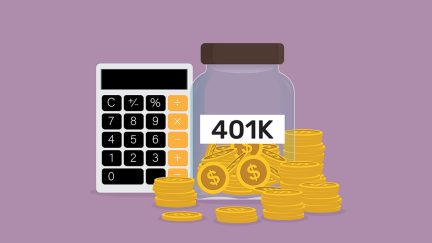Never miss a story — sign up for PLANADVISER newsletters to keep up on the latest retirement plan adviser news.
Workers Remain Optimistic About Retirement
Workers are confident that they will have enough money for basic expenses during retirement.

Workers’ retirement confidence remains high, despite the impact of the COVID-19 pandemic.
The Employee Benefit Research Institute’s “2022 Retirement Confidence Survey,” released this week, found that more than 70% of workers are somewhat confident that they will have enough money to live comfortably throughout their retirement and that almost 30% are very confident.
In 2021, the survey found that 80% were confident they would have enough money to live comfortably in retirement.
“Workers’ overall confidence in having enough money to live comfortably throughout retirement remained steady in 2022 relative to 2021,” says Craig Copeland, director of wealth benefits research at EBRI.
Other aspects of retirement confidence remained steady in 2022 from 2021. EBRI found that 74% of workers remained confident that they will have enough money to cover their basic expenses during retirement compared to 77% in 2021, and 65% reported feeling confident that they will have enough money to last their lifetime compared to 63% in 2021.
However, workers’ retirement confidence was impacted by the ongoing COVID-19 pandemic, Copeland explains.
“2020 and 2021 were trying times with significant financial impact on both American workers and retirees,” he says.
When workers were asked specifically how the pandemic affected their confidence in having enough money to live comfortably through retirement, “one in three report[s] that they were somewhat or significantly less confident in their retirement prospects,” he explains. “In contrast, one in seven report[s] that they’re more confident because of the pandemic.”
The least confident workers were also less prepared for retirement—workers with poor health, lower incomes, less savings and investments, major debt or who have not saved for retirement—because of the pandemic.
“Confidence levels have held at or just below their all-time highs even with the pandemic; however, those feeling less confident were those that were already less confident prior to the pandemic and were also those that were least prepared for retirement prior to the pandemic,” Copeland says.
Individuals who can access a retirement plan at work remain satisfied with their plan, as 82% of workers offered one are satisfied, according to EBRI. “One factor that appears to help confidence remain high is a continued satisfaction with workplace retirement savings plans,” Copeland says. “Furthermore, eight in 10 of these workers are satisfied with the investment options offered and eight in 10 of these workers utilizing tools and resources to help determine how much to save or to help them determine how to generate a stream of income from their savings are satisfied with the tools.”
Workers’ top choices for improvements to retirement savings plans were:
- better explanations of how much income their savings will produce in retirement;
- more options that provide guaranteed lifetime income; and
- better understanding of whether they are on track to accumulate sufficient retirement savings.
“With just under three in ten citing each of these as the most valuable improvements in the plans—just below those—one-quarter listed more options designed for after they retire and more investment options being available,” Copeland says.
EBRI also found that 10% of workers who have saved for retirement had taken a plan loan or hardship withdrawal from the workplace savings plan in the prior 12 months.
“The top reasons for taking these loans or withdrawals were to pay off credit card debt, make ends meet, make a large purchase, buy a home, cover COVID-19-related need or cover another emergency expense,” Copeland explains.
EBRI and Lisa Greenwald, CEO at Greenwald Research, conducted the online survey of 2,677 Americans 25 and older—1,545 workers and 1,132 retirees—from Jan. 4 through Jan. 26.
You Might Also Like:

Senate Committee Debates Social Security Funding Proposal

Do Retirement Portfolios Need ‘Protected’ Income?
